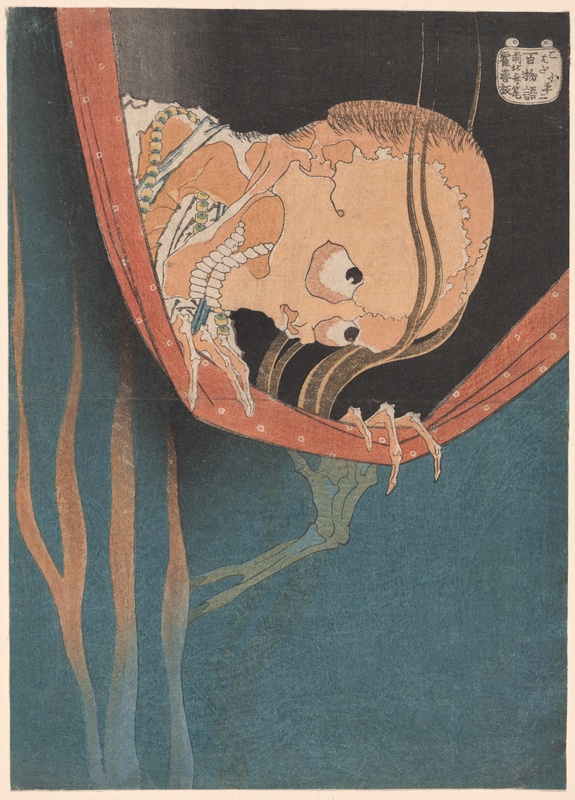Katsushika Hokusai's "One Hundred Ghost Tales"
Over the course of his artistic career, Katsushika Hokusai created thirty thousand drawings and paintings. He painted until the day he died, believing that his art and talent would only get better with age; allegedly, his last words were “If heaven would only give me five more years of life… I could become a truly great painter.” Hokusai painted every subject imaginable, from women to birds to fish and trees. His most famous work, “The Great Wave Off Kanagawa,” shows his incredible talent for landscape painting.
Through his obsession with art, Hokusai also found a deep love for the supernatural. Folk stories and ghost tales play a large role in Japanese culture, especially in literature. In his series “One Hundred Ghost Tales,” he explores traditional Japanese legends and ghost stories. Although he never got the chance to complete this series, there are five known prints he did finish. One work, “The Phantom of Kohada Koheiji,” depicts the ghost of Kohada Koheiji peering over a mosquito net. After he is drowned by his cheating wife and her lover, he returns in the night to haunt them. This story was popular during the 18th century, inspiring many Kabuki plays and even a novel.
In another painting, “The Mansion of the Plates,”the ghost of a woman can be seen floating up from a well, followed by plates. According to the ghost story, the woman was murdered by her abusive husband because she accidentally broke some plates. To hide her body, she is thrown down a well, along with the shattered remains of the plates. Because of her gruesome death, she returns every night to haunt her husband. This print series was titled “One Hundred Ghost Tales” after a popular game played during Hokusai’s time. During this game, people would gather at night to tell ghost stories, putting out a candle for every story told until the room was dark.

